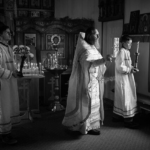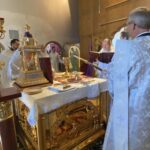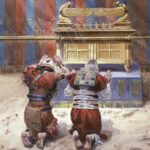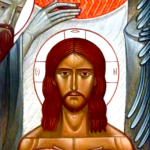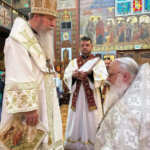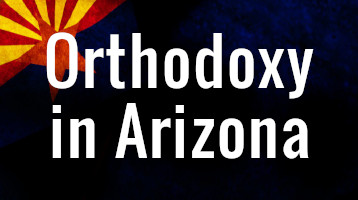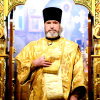At ASONA, we take preparedness seriously, whether spiritual, mental, or physical. Start with this: IOCC Emergency Supply Checklist (basic) The IOCC (International Orthodox Christian Charities) recommends that EVERYONE make preparations, or increase and improve their preparations during the month of September. ASONA’s website has a READY page, with a wealth of information to help you prepare. There you will find articles, and checklists, on many very real and frightening circumstances, including, Civil Unrest and Violence, Nuclear attack, EMP or loss of power, Covid-19 or other pandemic outbreaks, Martial Law, shelter-in-place orders, and more Also checklists for the … [Read more...]
Arizona Pastors Urge Flocks to VOTE NO on Prop 139
A grassroots effort has begun to unify Arizona Christian pastors around the sanctity of human life while providing a clear voice against the proposed “Arizona Abortion Access Act” (Prop 139) that will most likely be on the ballot November 2024. The proposed constitutional amendment called “The Abortion Access Act” makes abortion a “fundamental right” in Arizona. It puts that newly created right above the health and safety of girls and women and the life of the unborn. The amendment is written so broadly that, according to attorney analysis, it: Allows unlimited abortion up to birth under the broad “mental health” exemption that is frequently used to rubber stamp late-term abortion. … [Read more...]
Famous Greek TikTokker Becomes Orthodox Nun
A famous Greek TikToker with hundreds of thousands of followers gathered over the past eight years has dropped out of the “influencer” game to dedicate her life to Christ as a nun. 23-year-old Eleni Mazlou had nearly 480,000 followers who enjoyed her videos that often included scenes from everyday life, vacations, beauty tips, fashion, and other similar topics, reports the Union of Orthodox Journalists with reference to celebrity.reporter.com.cy. However, most of Mazlou’s videos recently disappeared, leaving her followers wandering what happened to her. Thus, she decided to publish photos on Instagram from her monastic tonsure, where she was given the name Ipomoni … [Read more...]
Alaskan Old Believer Parish Joins ROCOR
The Russian Orthodox Church Outside of Russia now has a second canonical Old Rite parish in America. In 1983, the Church of the Nativity of Christ in Erie, Pennsylvania, joined ROCOR and the parish leader was ordained as its first priest—Fr. Pimen. There are many parallels between the Erie parish and the Old Believer community in Nikolaevsk, Alaska, which is now on the same path, reports Sokritaya Rus’. The village of Nikolaevsk was founded in 1968. Today there are about 350 inhabitants. The community was originally of the priestless Old Believer tradition, but in 1983, a bishop in Romania ordained Nikolai Yakunin to the priesthood, who is now leading the community—with his son, Deacon … [Read more...]
Axios! New Ordinations for ASONA
Axios and congratulations to our newly ordained clergy. Priest Joseph MacPherson, and Deacon Patrick Gill were ordained at Holy Transfiguration Cathedreal in Los Angeles on their patronal feast day Monday August 19th, 2024 by Archbishop Kyrill of San Francisco and All Western America. Several parishioners had driven all the way to LA and were on hand for the liturgy. See the gallery below. Axios! … [Read more...]
ASONA Feast Day: Hierarchical Divine Liturgy
On Sunday, July 14, 2024, ASONA celebrated our Patronal Feast, and the hierarchical visitation of Bishop James of Sonora. It was the first time one of our bishops attended the new location for ASONA. A feast followed the Hierarchical Divine Liturgy. Here is a photo gallery of the event. … [Read more...]
Is There Such a Thing as Moral Heresy?
Apologetic students take notes! by Fr. John Whiteford We have previously discussed Aristotle Papanikolaou's strange notion that, unlike the dogmas of the Church, Orthodox Christian morality is open to dispute and change (see The Living Church 2.0). In the wake of a recent conference in Oxford of Orthodox "scholars, pastors, clinicians, and other experts" who gathered to "dialogue" about LGBTQP+ issues, Papanikolaou has asserted that never in the history of the Church has the term "heresy" been used to describe a false teaching on a moral issue. In the course of a Twitter exchange about the problems with this conference, I commented: "It's the idea that holding the position that … [Read more...]
Is the Veneration of the Cross Idolatry?
by Fr. John Whiteford If we look at the Scriptures and to Jewish custom, the answer is clearly “No.” Another grand slam from the Bible – from Fr. John’s “Stump the Priest” column Question: How would you answer a Protestant who considered our veneration of the Cross (bowing down before it and kissing it) to be idolatry? First we should consider whether or not bowing down before something or kissing it entails the worship of adoration that is due to God alone. If we look at the Scriptures and to Jewish custom, the answer is clearly “No.” Abraham bowed himself before the people of Hebron (Genesis 23:7, 12); Joseph’s brothers bowed before him (Genesis 42:6; 43:26, 28); and many other … [Read more...]
Why Did Christ Need Baptism?
A question asked by many is, “Why did Jesus need to be baptized?” To answer this, let’s first explore the nature of baptism as explained by Saint John Chrysostom. Jewish Baptism Saint John Chrysostom points out that the Jewish Baptism was one of cleansing. He says, There was a Jewish baptism, which cleansed from bodily impurities, but not to remove sins. Thus, whoever committed adultery, or decided on thievery, or who did some other kind of misdeed, it did not free him from guilt. But whoever touched the bones of the dead, whoever tasted food forbidden by the law, whoever approached from contamination, whoever consorted with lepers — that one washed, and until evening was impure, … [Read more...]
ASONA Rector Elevated to Archpriest
Christ is Risen! Truly, He is Risen! On Sunday, May 12, 2024 at the new Holy Virgin Cathedral in San Francisco, his eminence Archbishop Kyrill, Archbishop of San Francisco and Western America elevated the rector of ASONA, Priest John A. Peck to the rank of Archpriest. Archpriest, (Greek: πρωτοπαπᾶς, protopapas) or protopresbyter (Greek: πρωτοπρεσβύτερος, protopresbyteros), is a clerical rank, a title of honor given to non-monastic priests and is conferred by a bishop with the laying on of hands and prayer. The ceremony for making an archpriest is analogous to other clerical promotions bestowed with cheirothesia: at the Little Entrance of the Divine Liturgy, the candidate is conducted … [Read more...]
- « Previous Page
- 1
- 2
- 3
- 4
- 5
- 6
- …
- 28
- Next Page »



